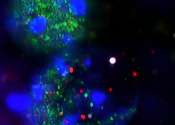Root cause of Alzheimer's may be fat buildup in brain cells, research suggests
A team of neurologists, stem cell specialists and molecular biologists affiliated with several institutions in the U.S. and led by a group at Stanford University School of Medicine has found evidence that the root cause of ...









